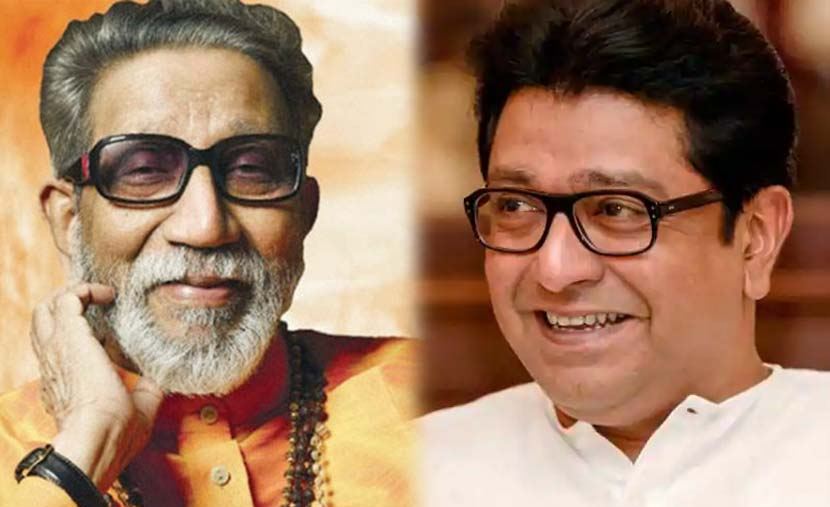MNS chief Raj Thackeray is all set to claim the legacy of late Bal Thackeray, as Shiv Sena has joined the ‘secular’ parties. When Raj Thackeray formed the party in 2006, his core focus was Marathi Manus (son of the soil) plank, and he raised the issue of Marathi sub-nationalism and anti-immigration in even more chauvinistic way than Shiv Sena.
But when Uddhav Thackeray has compromised on the issues of Marathi Manus (son of the soil plank) and Hindutva, to ally with NCP-Congress, Raj Thackeray is ready to claim the ideological ‘void’ left by Shiv Sena.
Raj Thackeray, who learnt politics from his late uncle and Shiv Sena patriarch, could see that there is a space vacated for Hindutva and son of the soil politics. And Raj Thackeray, given his family legacy, is the best person to fill this space.
Raj Thackeray is a legitimate inheritor of Bal Thackeray’s politics in terms of personality, political oratory, and almost every other political trait. He delivers speeches in the same fashion; chants the same slogans; is a great crowd puller.
The political observers from Maharashtra, and MNS’ own party leaders, have always highlighted the similarities between Raj Thackeray and the late Hindutva icon.
“Bal Thackeray’s style comes naturally to Raj, since he is Balasaheb’s relative and is obviously influenced by him. Raj also draws good caricatures like Balasaheb. But the fact is you can’t be good at what you do by just copying; it should be innate,” said Nitin Sardesai to Mid-day.
Raj Thackeray is blunt like Bal Thackeray. His style of politics does not go very well with left-liberal media establishment, like that of Bal Thackeray. Just like the late Hindutva icon, he poses utmost faith in the people, rather than other institutions like courts and legislature.
“Raj has cloned himself on his uncle and hopes for a political future based on the same agenda and style. He openly admits that he apes his uncle, but only time will tell whether he succeeds politically,” said Nikhil Wagle.
Like Shiv Sena, MNS too was found on the Marathi Manus agenda, but, in the mid-1980s, when BJP started raising Ram Temple and Hindutva issues, Bal Thackeray hijacked the issue, and benefitted immensely from that. The CAA is temple issue of Raj Thackeray, whose party is shifting the ideological stance from son of the soil to Hindutva.
In the 23rd January meet, the party inducted the photo of Veer Savarkar and changed the flag to all saffron. Rattled with Hindutva stance of Raj Thackeray, Saamna wrote, “Fourteen years ago, Raj Thackeray formed a party for the Marathi ideology but now it has changed its track to Hindutva. There’s little hope that they will be able to get anything in their hands even now (after inching closer to BJP). When Raj Thackeray during his speech said welcome my Hindu brothers and sisters it was demanded by BJP. MNS could not get anything and now also it cannot get anything.”
Raj Thackeray is ready to fill the ‘void’ of Shiv Sena, which abandoned Hindutva and its icons, in order to grab power in Maharashtra. The party flag, which had saffron, blue, white & green colours, changed it to all saffron in the 23rd January meet. The meet was scheduled on the birthday anniversary of the Bal Thackeray.
On the other hand, Uddhav Thackeray has none of the traits of a popular politician, and therefore he is playing second fiddle to Pawar family members, despite contributing the maximum number of seats in the alliance. He has been made the titular head of state, a de jure leader, put on the chair only to sign on the decisions taken by alliance partners. The plight of Shiv Sena could be witnessed in the portfolio distribution of ministries, where all the significant posts went to NCP.
